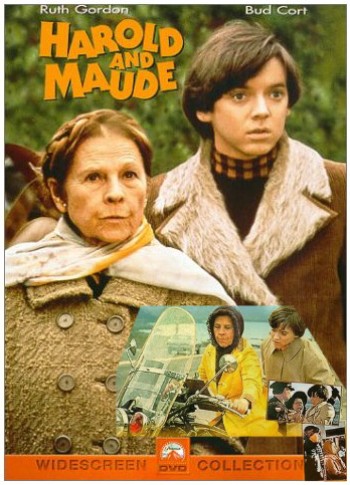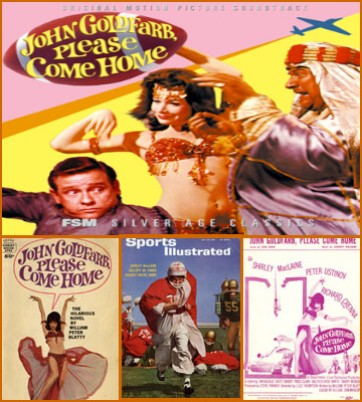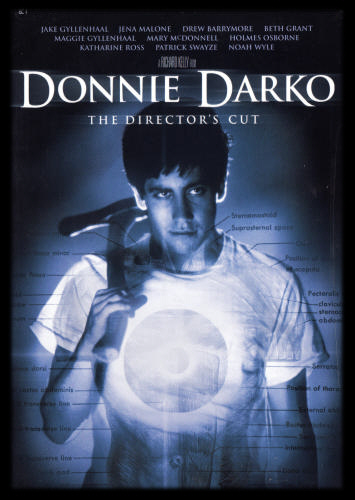
DONNIE DARKO
During the presidential election of 1988, a teenager named Donnie Darko sleepwalks out of his house one night, and sees a giant, demonic-looking rabbit named Frank, who tells him the world will end in 28 days, 6 hours, 42 minutes, and 12 seconds. He returns home the next morning to find that a jet engine has crashed through his bedroom. As he tries to figure out why he survived and tries to deal with people in his town, like the school bully, his conservative health teacher, and a self-help guru, Frank continues to turn up in Donnie's mind, causing him to commit acts of vandalism and worse. The new Director?s Cut includes a production diary of the film (with optional commentary by Director of Photography Steven Poster), a story-board to screen featurette, the Director?s cut theatrical trailer, They Made Me Do It Too ? The Cult of Donnie Darko and the #1 Fan: A Darkomentary. With an additional 20 minutes of material added to the original theatrical edition (including scenes not included in the augmented version previously released on DVD), Donnie Darko: The Director's Cut has a slower, more reflective pace than its first edit, and many more moments of emotional and tonal complexity. The film also has a fuller soundtrack (INXS' "Never Tear Us Apart" is featured prominently in writer-director Richard Kelly's mysterious opening) and new, startling special effects that underscore Donnie's ambiguous experience of time travel and cross-dimensional encounters with Frank, the 6-foot provocateur in a terrifying bunny costume. (Of course, new f/x or not, Donnie could still be a paranoid schizophrenic immersed in violent delusions.) Purists might find some of these changes to Kelly's 2001 cult hit about a troubled teen (Jake Gyllenhaal) trapped in alternative, apocalyptic destinies troubling. But overall the film is an even more haunting experience, impossible to shake.
Earth vs The Flying Saucers
Dr. Russell Marvin heads up Operation Skyhook, which is tasked with sending rockets into the upper atmosphere to probe for future space flights. Unfortunately, all the rockets are somehow disappearing. While investigating this strange occurrence, Russell and his new assistant/wife Carol Marvin are abducted by a flying saucer, where the aliens demand to meet with certain people in order to negotiate. But it was a trick; the aliens only wanted to kill them. The invasion has begun and if Russell and Carol can't find a way to get past their defenses and stop these creatures, it may be the end of the human race. A textbook example of '50s-era science fiction, Earth vs. the Flying Saucers boasts not only a solid script and competent performances, but some genuinely impressive stop-motion effects courtesy of one of the industry's uncontested masters, Ray Harryhausen. Scientist Hugh Marlowe (who faced a more benevolent invader from space five years earlier in The Day the Earth Stood Still) discovers that UFOs are responsible for the destruction of a series of exploratory space rockets launched by his space exploration project. The saucers' helmeted pilots land on Earth and deliver an ultimatum to humanity via Marlowe: fealty or complete annihilation. Harryhausen's painstakingly intricate saucers and the destruction they wreak (particularly during an assault on Washington, D.C.) are the film's unquestionable highlights, but Marlowe and Joan Taylor (as his wife/partner) are capable leads, and veteran B director Fred F. Sears doesn't let the dialogue and expositional scenes fall apart in between the barrage of effects. Earth vs. the Flying Saucers is a fun and effective slice of sci-fi that should please younger audiences as well as nostalgic return viewers. Sears later reused some of the effects footage for his jaw-droppingly awful 1957 effort, The Giant Claw. --Paul Gaita

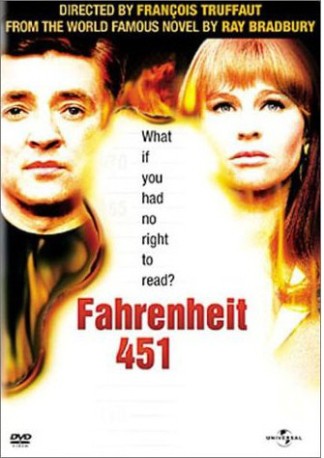
FAHRENHEIT 451
The classic science fiction novel by Ray Bradbury was a curious choice for one of the leading directors of the French New Wave, François Truffaut. But from the opening credits onward (spoken, not written on screen), Truffaut takes Bradbury's fascinating premise and makes it his own. The futuristic society depicted in Fahrenheit 451 is a culture without books. Firemen still race around in red trucks and wear helmets, but their job is to start fires: they ferret out forbidden stashes of books, douse them with gasoline, and make public bonfires. Oskar Werner, the star of Truffaut's Jules and Jim, plays a fireman named Montag, whose exposure to David Copperfield wakens an instinct toward reading and individual thought. (That's why books are banned--they give people too many ideas.) In an intriguing casting flourish, Julie Christie plays two roles: Montag's bored, drugged-up wife and the woman who helps kindle the spark of rebellion. The great Bernard Herrmann wrote the hard-driving music; Nicolas Roeg provided the cinematography. Fahrenheit 451 received a cool critical reception and has never quite been accepted by Truffaut fans or sci-fi buffs. Its deliberately listless manner has always been a problem, although that is part of its point; the lack of reading has made people dry and empty. If the movie is a bit stiff (Truffaut did not speak English well and never tried another project in English), it nevertheless is full of intriguing touches, and the ending is lyrical and haunting. --Robert Horton
FANTASTIC VOYAGE
2001: A Space Odyssey took the world on a mind-bending trip to outer space, but Fantastic Voyage is the original psychedelic inner-space adventure. When a brilliant scientist falls into a coma with an inoperable blood clot in the brain, a surgical team embarks on a top-secret journey to the center of the mind in a high-tech military submarine shrunk to microbial dimensions. Stephen Boyd stars as a colorless commander sent to keep an eye on things (though his eyes stay mostly on shapely medical assistant Raquel Welch), while Donald Pleasance is suitably twitchy as the claustrophobic medical consultant. The science is shaky at best, but the imaginative spectacle is marvelous: scuba-diving surgeons battle white blood cells, tap the lungs to replenish the oxygen supply, and shoot the aorta like daredevil surfers. The film took home a well-deserved Oscar for Best Visual Effects. Director Richard Fleischer, who turned Disney's 1954 20,000 Leagues Under the Sea into one of the most riveting submarine adventures of all time, creates a picture so taut with cold-war tensions and cloak-and-dagger secrecy that niggling scientific contradictions (such as, how do miniaturized humans breathe full-sized air molecules?) seem moot. --Sean Axmaker
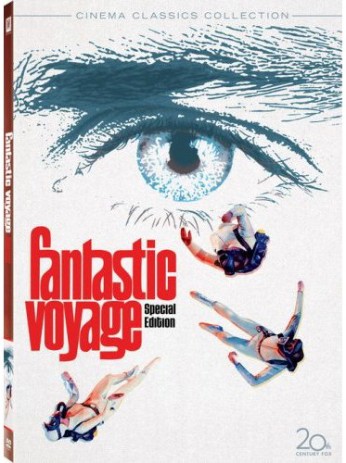
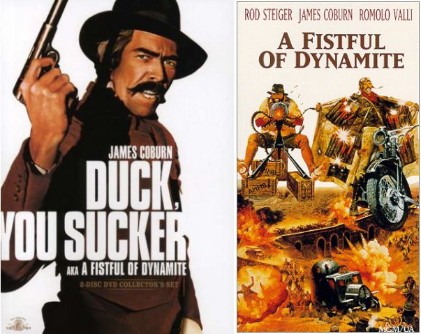
DUCK YOU SUCKER / Fist Full of Dynamite
A different sort of Sergio Leone Western, this one takes place during the Mexican Revolution, with more politics than usual. But there's still plenty of action, with Rod Steiger as a cigar-chomping peasant who robs banks to liberate political prisoners, and James Coburn as an Irish terrorist trying to flee from his bitter past. They team up to thwart a sadistic officer and help the cause; redemption for the more subdued Coburn provides added depth. This contains the longer uncut version (released in Italy) known as Duck, You Sucker, featuring more flashbacks, more politics, and a more unsavory Steiger. But it's terrific fun, with Ennio Morricone's moody score and Coburn's most underrated performance. --Bill Desowitz
FRITZ THE CAT
Advertised as "X-rated and Animated," Fritz the Cat earned an impressive $25 million in 1972. Screenwriter-director Ralph Bakshi based the film on three of Robert Crumb's stories about a superficial college student who tried to seduce anything in a skirt. The gritty, often gross film shocked U.S. audiences accustomed to innocent flirtations and slapstick comedy in cartoons. Thirty years later, Fritz looks less shocking than puerile. The violence grafted onto Crumb's innocent stories feels gratuitous, and the racial imagery tasteless. As dated as a Nehru jacket, the film will interest students of animation history and American pop culture. Crumb detested the film: he drew Fritz as a decadent Hollywood star, who was exploited by caricatures of Bakshi and producer Steve Krantz--and murdered by a bitter ex-girlfriend. "Another casualty of the '60s..." --Charles Solomon Maverick writer-director Ralph Bakshi (Heavy Traffic) made his feature-length film debut with this "startling and audacious" (The Hollywood Reporter) foray into adult-content animation,creating the first X-rated cartoon and one of the most successful animated features of its time! Based on a legendary character created by underground comic book artist-writer R. Crumb, Fritz the Cat is a brilliant commentary on '60s life and a "snarling satire that stubbornly refusesto curl up in anyone's lap" (Playboy). It's the age of awakening and Fritz, one way-cool cat and NYU student, loves to embrace every experimental experience that crosses his path. Embarking on a fantastic journey of self-discovery, he indulges in everything from multiple bedroom follies to a wild joy ride through a dangerous Harlem. But when Fritz joins a group of radically aggressive hippies, he finds himself holding the dynamite that will detonate the ultimate '60s statement one that could cost him his life!
Harold and Maude
Black comedies don't come much blacker than this cult favorite from 1972, and they don't come much funnier, either. It seemed that director Hal Ashby was the perfect choice to mine a mother lode of eccentricity from the original script by Colin Higgins, about the unlikely romance between a death-obsessed 19-year-old named Harold (Bud Cort) and a life-loving 79-year-old widow named Maude (Ruth Gordon). They meet at a funeral, and Maude finds something oddly appealing about Harold, urging him to "reach out" and grab life by the lapels as opposed to dwelling morbidly on mortality. Harold grows fond of the old gal--she's a lot more fun than the girls his mother desperately matches him up with--and together they make Harold & Maude one of the sweetest and most unconventional love stories ever made. Much of the earlier humor arises from Harold's outrageous suicide fantasies, played out as a kind of twisted parlor game to mortify his mother, who's grown immune to her strange son's antics. Gradually, however, the film's clever humor shifts to a brighter outlook and finally arrives at a point where Harold is truly happy to be alive. Featuring soundtrack songs by Cat Stevens, this comedy certainly won't appeal to all tastes (it was a box-office flop when first released), but if you're on its quirky wavelength, it might just strike you as one of the funniest movies you've ever seen. --Jeff Shannon
Jacob's Ladder
Vietnam veteran Jacob Singer (Tim Robbins) thinks he is going insane. Or worse. When his nightmares begin spilling into his waking hours, Jacob believes he is experiencing the aftereffects of a powerful drug tested on him during Vietnam. Or perhaps his posttraumatic stress disorder is worse than most. Whatever is happening to him, it is not good. Director Adrian Lyne sparks our interest and maintains high production values, but this confusing film chokes on its "surprise" ending. It owes much to Ambrose Bierce's haunting and more straightforward story, "An Occurrence at Owl Creek." Written by Bruce Joel Rubin, who also explored the "other side" in Ghost and My Life, it ultimately feels like an exercise in self-indulgence. A spirited performance by Elizabeth Peña outshines Robbins, who is surprisingly lethargic. --Rochelle O'Gorman
Jacob's Ladder has a message, a Deep and possibly Dark message, but one that needs to be heard, It doesn't make its-self obvious, but is there for the viewer who is looking for answers from the film...
John Goldfarb, Please Come Home! is a 1965 comedy starring Richard Crenna, Shirley MacLaine and Peter Ustinov. Crenna plays a U-2 pilot who crash lands in the mythical Arab kingdom of Fawzia and is blackmailed into coaching the king's football team in an exhibition game against the Notre Dame Fighting Irish. Perhaps the film's biggest claim to fame is that Notre Dame University sued in an attempt to block the film's release, so offended were they by the picture's raucous humor, racial stereotypes and ridiculous situations. John (Wrongway) Goldfarb (Richard Crenna), is involved in our defense as a U2 pilot. He is in the process of surveying Russia when as with everything else in his life something always goes wrong; in this case it was his plane. He is forced to bail out over Fawzi Arabia. The reason that he actually got his nickname Wrongway is because he used to be in football and ran the wrong way. It's a clever, 60's comedy with then-youngsters Richard Crenna and Shirley MacLaine that had the perfect blend of interests for some -- football / and bellydancing. John Goldfarb. Is a (sometimes annoying) but overall hilarious movie that i for one have loved since I was a kid, The Solid Gold (Choo Choo Train) that's No Good, belching Black Smoke throughout the palace, I always get a good laugh watching this movie and have found a place in my collection for it to stay.

